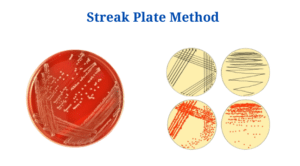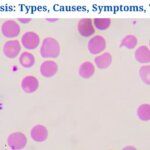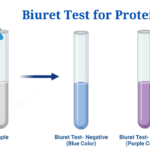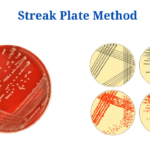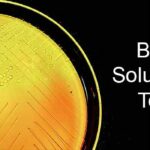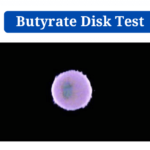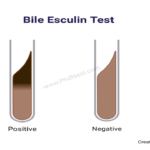What is Streak Plate Method ?
- Striking (Streak Plate Method) is a microbiology technique for isolating a pure strain from a single species of microbe, most commonly bacteria.
- Loeffler and Gaffky invented the dilution or isolation by streaking method in Koch’s laboratory, which includes systematically streaking bacteria across the exterior of the agar in a Petri dish to obtain isolated colonies that will then multiply into a large number of cells or isolated colonies.
- Streaking is a quick and easy method of isolation dilution.
- The process involves diluting a high concentration of germs into a lower concentration.
- A decrease in bacteria indicates that colonies are sufficiently spaced apart to separate distinct types of germs.
- For streaking, a sterile instrument such as a cotton swab or, more commonly, an inoculation loop is employed.
- To keep microbiological cultures alive and prevent contamination of the growth medium, aseptic procedures are used.
Principle of Streak Plate
- The streak plate method is a qualitative isolation method that may be done quickly.
- The number of organisms in the inoculums must first be lowered in order to apply typical approaches for isolating discrete colonies.
- Spreading a loopful of culture over the surface of an agar plate is essentially a dilution technique.
- Following inoculation, individual cells will be sufficiently far apart on the surface of the agar medium to effect a separation of the distinct species present due to the reduction in population size.
- A sterile loop or swab is used in the streaking method to obtain an uncontaminated microbial culture. When isolated colonies are transferred from an agar plate to a new agar or gelatin plate using a sterile loop or needle, the procedure is known as “picking colonies.”
- After that, an agar surface is streaked with the inoculating loop or needle.
- Many microorganisms are deposited in the first region of the streak, resulting in confluent growth or culture growth across the whole surface of the streaked area.
- Between streaking different parts, or zones, the loop is disinfected by heating it in the blue flame of the Bunsen burner, and so fewer bacteria are deposited as the streaking advances.
- The streaking process will dilute the sample that was deposited in the agar surface’s first region.
Materials required for Streak Plate Method
- A source of bacteria (stock culture, previously streaked agar plate or any other inoculum)
- Inoculation loop
- A striker/lighter
- Bunsen burner
- Lysol (10%v/v)
- Agar plate (nutrient agar or any other agar medium)
- Paper towels
Tips for the best results:
- Use only a small amount of inoculum.
- Streak lightly so that you do not gouge the agar.
- Flame the loop after you streak each quadrant.
- Make sure the surface of the plate is free of droplets of condensed moisture.
Streak Plate Techniques
- There are a variety of techniques for streaking a plate. The three-sector “T streak” and the four-quadrant streak approaches are the most often used streak patterns.
- Choosing a technique is a personal choice that can also be influenced by the amount of microorganisms present in the sample.
(a) T-Streak
- T-Streak refers to a three-phase streaking pattern.
- Streaking is done using a sterile instrument like a cotton swab or, more commonly, an inoculation loop.
- The inoculation loop is sterilised first by being passed over a flame.
- When the loop is cold enough to handle, it is dipped into an inoculum, such as a broth or a patient specimen that contains a variety of bacteria.
- The inoculation loop is then pushed in a zigzag pattern across the surface of the agar plate until roughly 30% of the plate is covered.
- The plate is then flipped 90 degrees and the loop is re-sterilized.
- The loop is dragged through the previously streaked region two to three times, continuing the zigzag pattern.
- The operation is next repeated, this time taking careful not to touch the streaked areas.
- The loop collects fewer and fewer bacteria each time until it only has single bacterial cells that can grow into a colony.
- In the first section of the plate, the heaviest growth should be visible.
- The second segment will have slower growth and fewer isolated colonies, while the third section will have the slowest growth and the most isolated colonies.
(b) Method of Quadrants
The quadrant approach involves streaking four areas of equal size. Inoculating the top half of the plate, rotating it 180 degrees, then inoculating the other half of the plate without sterilising the loop or dragging germs from the preceding area is typical of the continuous streaking method.
(c) Method of Discontinuous Streaking
- In the bunsen burner, sterilise the inoculating loop by placing it in the flame until it is red hot. Allow time for it to cool.
- Using near parallel streaks, disseminate an isolated colony from the agar plate culture throughout the first quadrant (about 1/4 of the plate) or insert your loop into the tube/culture bottle and remove some inoculum. You don’t need a large quantity.
- Immediately, using a back and forth motion, streak the inoculating loop across a quarter of the plate.
- Allow the loop to cool before flaming it again. Extend the streaks into the second quarter of the plate, returning to the edge of area 1 where you recently streaked.
- Allow the loop to cool before flaming it again. Extend the streaks into the third quarter of the plate, returning to the spot where you recently streaked.
- Allow the loop to cool before flaming it again. Extend the streaks into the middle fourth of the plate, returning to the region where you just streaked.
- Once more, smoulder your loop.
Streak Plate Method Results
The streaked plate is incubated at 37°C for 24 hours. Examine the colonies grown in the plate carefully. All colonies should have the same general appearance. If there is more than one type of colony, each type should be streaked again on a separate plate to obtain a pure culture.
The Importance of the Streak Plate Method
- The most common approach for separating individual bacteria from a sample containing a combination of microorganisms is the streak plate technique.
- The streak plate technique, which includes cultivating bacteria on a growth media surface, is used to isolate and sample individual bacterial colonies.
- The organism can then be recognised, examined, or tested by taking samples from the isolated colonies and growing a microbiological culture on a fresh plate.
- The causative agent of a bacterial disease can be determined by streaking and isolating the bacteria.
Limitations of Streak Plate
Streak Plate Limitations Streak plating is a microbiology laboratory procedure with two primary drawbacks.
- To begin with, this method will not allow users to develop obligate anaerobes.
- Second, only organisms that were alive in the initial sample can be cultivated.
Streak Plate Citations
- James G. Cappuccino, Chad T. Welsh (2017). Microbiology: A Laboratory Manual, 11th Edition. Pearson Publications.
- Western Nevada College Biology 251 Laboratory Manual;”Three Streaks for Bacterial Isolation”; Dr. Steve Carman; 2009
- http://vlab.amrita.edu/?sub=3&brch=73&sim=213&cnt=2
- https://www.reference.com/science/disadvantages-streak-plate-method-9251f3edc3dcd5a3
- http://www.nuffieldfoundation.org/practical-biology/making-streak-plate
- https://www.jove.com/video/3064/aseptic-laboratory-techniques-plating-methods
- http://www.answers.com/Q/What_is_the_advantages_of_streak_plate_method
Related Posts
- Anisocytosis: Definition, Types, Causes, Symptoms, Treatment
- Endospore Staining: Principle, Procedure, Reagents, Results
- Flow Cytometry: Overview, Principle, Steps, Types, Uses
- Northern Blot: Overview, Principle, Procedure and Results
- MPV Blood Test: Calculation, High and Low MPV Value, Results
- Latex Agglutination Test: Objectives, Principle, Procedure, Results
- Iodine Test: Definition, Objective, Principle, Procedure, Results
- Eosin Methylene Blue (EMB) Agar
- Biuret Test for Protein: Purpose, Objectives, Principle, Procedure, Reagents
- Streak Plate Method: Meaning, Principle, Methods, Importance, Limitations
- Bile Solubility Test: Objective, Principle, Procedure, Results, Uses
- Butyrate Disk Test: Objective, Principle, Procedure, Results, Uses, Limitations
- Beta Lactamase Test: Objective, Principle, Procedure, Results, Limitations
- Bacitracin Susceptibility Test: Objective, Principle, Procedure, Results, Uses, Limitations
- Bile Esculin Test: Objective, Principle, Procedure, Result, Uses, Limitations

